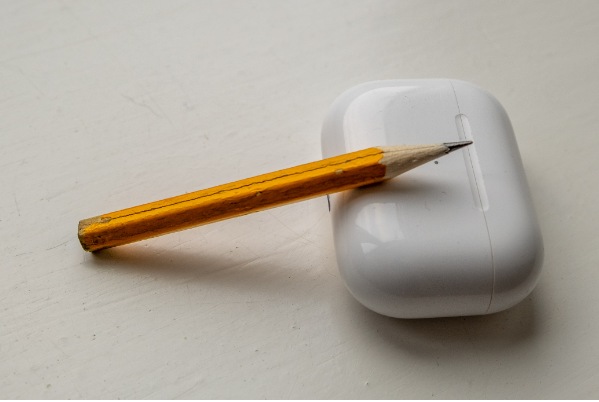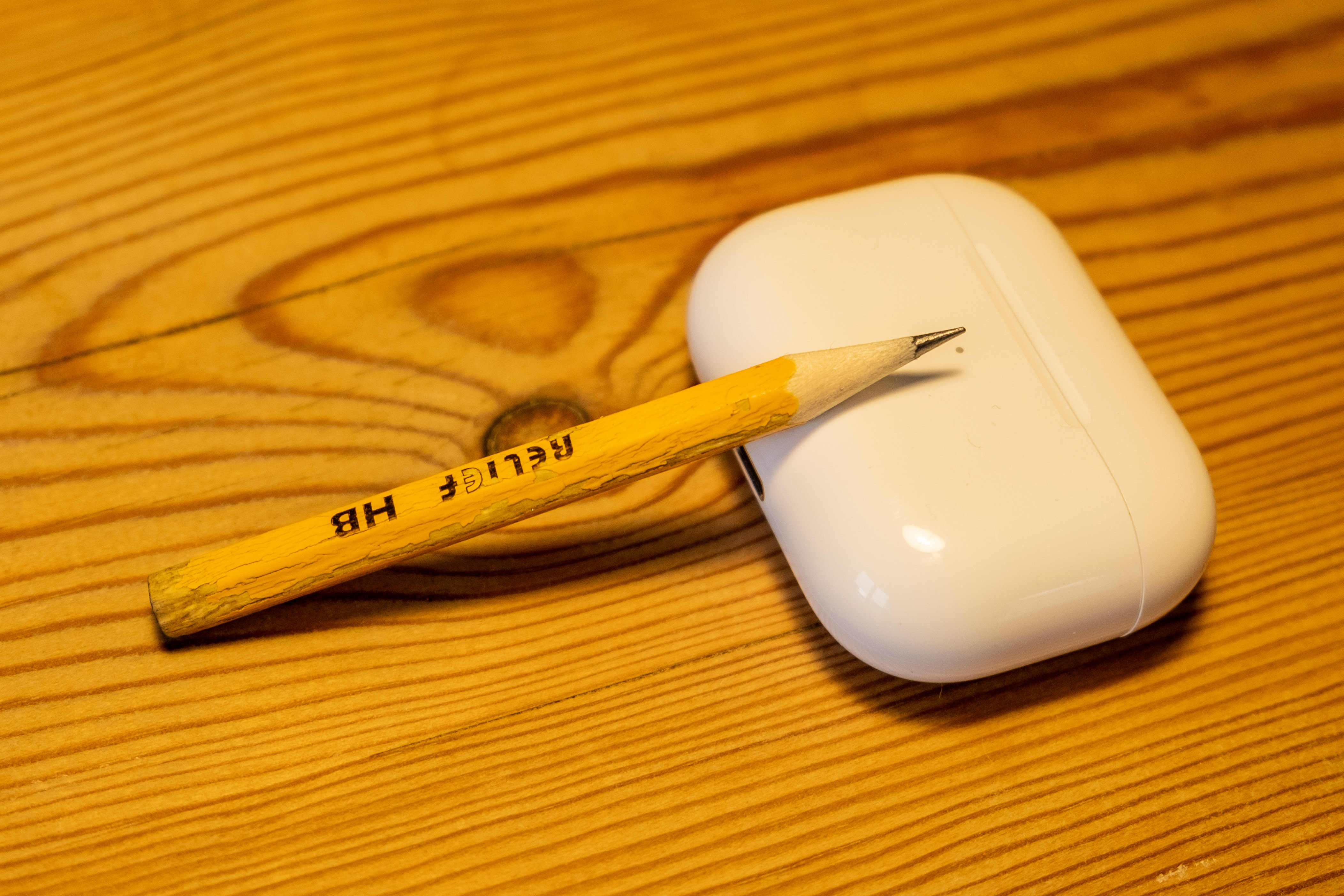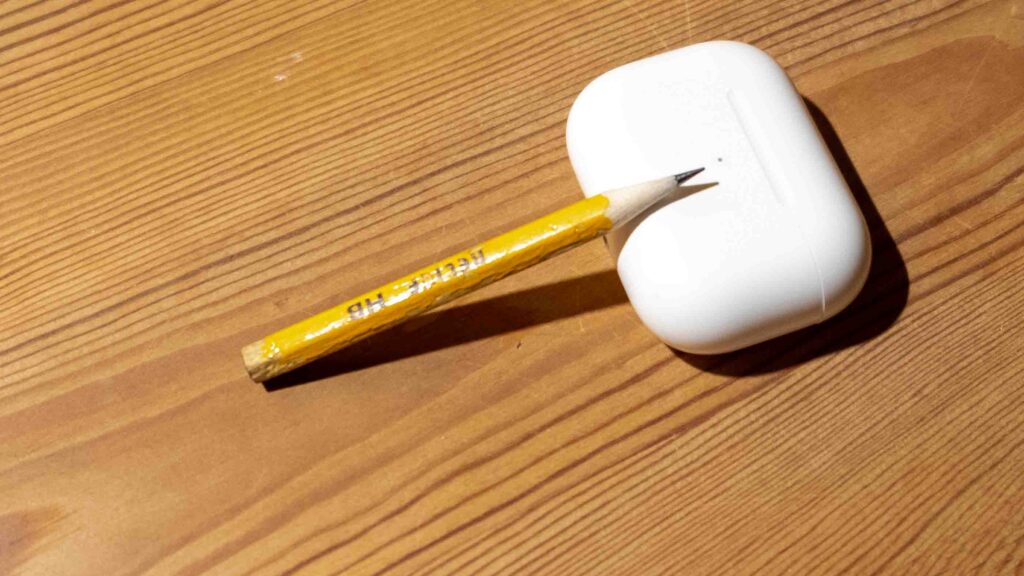If you heard that soft light is better than hard light, it is likely that statement came from a portrait photographer. Soft light is in general perceived as giving a more flattering look, where the light wraps gently around the subject.
But what is soft light? Soft light is light where the transition from bright to dark happens gradually, i.e. there is a lot of mid tones in the transition zones. Take a look at this pencil that I placed in my window space on an overcast day:

On a cloudy day, the sunlight is made into a massive light source as the light is spread across the vast area of clouds. In other words, the light source is huge! Notice the shadow at the tip of the pen? It is hardly there. You see a shadow where the pen rests upon the AirPod charging case, but the rest of the shadow is one big zone of tones of grey.
Now look at the next example, where I placed the pen under a reading lamp. A light source much smaller than the light from the clouds:

Suddenly you can now clearly see the shadow of the tip of the pen. If you look carefully, there still is a bit of grey zones where the white from the case transitions into the dark of the shade, but it happens much more abruptly than in the former example. The reading lamp as light source is simply much smaller.
Finally, the most harsh and brutal hard light I could think of: a flash held some distance from the subject with no diffusion at all! The bare bone flash activated here – you can see the flash light reflected in the yellow of the pen:

In this final example, the transition from light case to shadow from the pen happens almost from one pixel to the next. Okay, maybe not so suddenly, but I hope the difference is clear.
It all comes down to the size of the light source, relative to the size of the subject. The bigger the light source, the softer the light.
So what should you use? As you may have guessed, my annoying answer is: it depends. Yes, for portrait photography you probably want to show the more flattering side of your subject and use flattering light. But hard light works fine as an artistic expression or to simulate a sunny day with no clouds at high noon. So use the softness of the light as a tool in your toolbox and use it deliberately, instead of just saying “soft light is the only light that works”.
